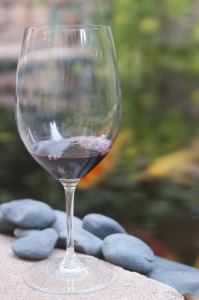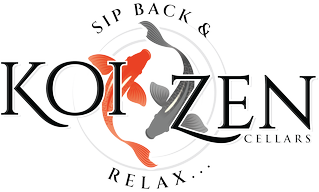Hi All,
Breaking News:
 We have just been informed that our TTB federal application is under initial review!!! Let’s hope things go smoothly. For the last month we have had our state declaration in the window and it has led to some interesting questions, a few bizarre phone calls and of course a ton of new business solicitation calls.
We have just been informed that our TTB federal application is under initial review!!! Let’s hope things go smoothly. For the last month we have had our state declaration in the window and it has led to some interesting questions, a few bizarre phone calls and of course a ton of new business solicitation calls.
One afternoon I get a phone call and before I could say anything, the caller says, “What are you?” and then silence. So I reply, “A person.” Then they say, “No, do you serve food?” I answered, “No. We make wine.” and they hung up. Go figure.
We also have our CA ABC license application filed. After the federal TTB license is granted, the the state can process. I hope things go without a glitch.
Social Media Update:
We got our website up and running and we also got our Facebook page up, so please check it out and leave a comment. As part of the winery planning process, we will be using Facebook to poll you guys for ideas, likes, suggestions and comments. Our goal is to provide you with the best experience possible, so be sure to let us know what you would like to see offered by participating!
We Racked and Stacked:
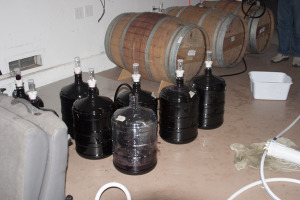
When wine is first pressed, there are a lot of suspended solids and dead yeast floating around. As the wine sits, these solids called “lees” drop out and form a gunk on the bottom of the barrel. The lees are nutrient rich and are very inviting to spoilage organisms, so it is best to get rid of them as quickly as possible. The timing is a balancing act; on one hand they provide nutrition for the malolactic fermentation (MLF) and provide flavoring, but they also can create off odors if one is not careful such as hydrogen sulfide (H2S) which smells like rotten eggs.
When making most red wines and a few whites, there are two “fermentations”. The primary fermentation converts the sugars to alcohol. The second “fermentation” is not really fermentation but a bacterial process that converts malic acids to lactic acids. Malic acid can be described as crisp, tart or green apples. Lactic acid is smooth, creamy or buttery (think California Chardonnay). Our wine only partially finished malo due to high alcohol content, but that’s OK, the wine tastes great and is getting better and better day by day. To protect the wine, we decided to rack and spike it with sulfites to protect the wine from oxidation and microbial spoilage (and by the way, they don’t cause headaches, but that will be dealt with in a later post. They can cause a severe allergic reaction though.
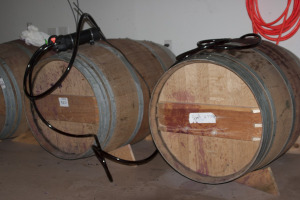
The racking process was straight forward; we pumped the wine from one barrel into 8 six gallon containers called carboys (fancy water jugs) and a bucket. The idea is you want to siphon off the top layer of clear wine without disturbing the lees which are this opaque pink glob/pudding/sludge/mess. The now empty barrel was rinsed out and the next barrel was racked/pumped into it. During each racking you lose some wine that is mixed with the lees so in the end we were down to two barrels and 48 gallons in carboys. We will rack the wine a few more times to clarify it even further as it continues to age. Our whole setup looked like some kind of Frankenstein heart transplant but it worked.
What you do with the left overs? You drink it of course using only the finest crystal decanter and glasses. We are still working on our packaging.
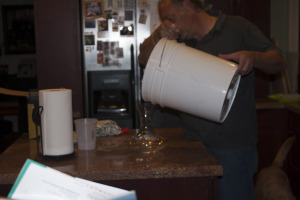
Winery Construction:
Our construction start date is soon approaching and we will keep everyone in the loop on what is going on in our next blast. If you know anyone else interested in this little adventure, pass our information along. Also, if you know any great interior designers, let us know!
Cheers,
Darius and Lisa
